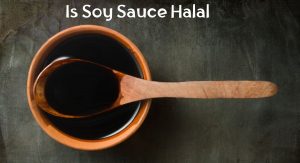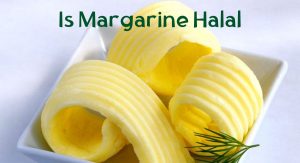In a world where dietary considerations play an increasingly significant role in our daily lives, the question of whether Vegemite is Halal has become a matter of interest for many. Vegemite, an iconic Australian spread, has garnered a loyal following worldwide.
In this comprehensive article, we will explore the Halal status of Vegemite, shedding light on what Vegemite is, its diverse product range, the ingredients used in its production, recommended consumption methods, a comparison with its cousin, Marmite, and address some frequently asked questions that will help you make an informed choice about including Vegemite in your diet.
So, if you’ve ever wondered whether Vegemite aligns with your dietary requirements, read on to uncover the answers to these essential questions.
Is Vegemite Halal
Yes, according to the official company website, VEGEMITE proudly holds certification as a Halal product, validated by The Halal Certification Authority (HCA). This certification is a testament to VEGEMITE’s commitment to catering to the dietary preferences and requirements of individuals who adhere to Halal dietary guidelines.

To uphold this certification, VEGEMITE undergoes a meticulous production process. It is exclusively manufactured on a dedicated production line, ensuring that it remains entirely separate from any ingredients derived from animals.
Moreover, VEGEMITE guarantees that its yeast, a fundamental component of the spread, is processed in a manner that eliminates any trace of alcohol content, thus complying with Halal principles.
This dedication to maintaining Halal standards underscores VEGEMITE’s inclusivity and accessibility to a diverse range of consumers.
What is Vegemite
Vegemite is a savory spread made from leftover brewers’ yeast extract, a byproduct of beer production. It is an iconic Australian food product known for its distinctive, strong, and salty taste. Vegemite is typically dark brown in color and has a thick, paste-like consistency. It is often spread thinly on bread, crackers, or toast and can be enjoyed as a condiment in various dishes.
The Vegemite story began with Dr. Cyril P Callister from the Fred Walker Company. After months of laboratory tests, Dr. Callister developed a spreadable product using brewer’s yeast, one of the richest natural sources of B vitamins. Originally known as “Pure Vegetable Extract,” the product was later renamed Vegemite.
When Vegemite was first introduced, it faced challenges in a market already dominated by Marmite, an English spread. Australians were hesitant to try a locally made product, resulting in poor sales. In 1928, the name was changed to “Parwill” as part of a rebranding strategy to emulate Marmite’s success. However, this strategy did not deliver the desired results.
It took 14 years of perseverance and a return to the original Vegemite brand for Australians to embrace this iconic spread. In 1937, a limerick competition with enticing prizes such as Pontiac cars was launched to boost entries and sales nationwide.
The competition was a success, and Vegemite gained official product endorsement from the British Medical Association in 1939. Medical professionals and baby care experts began recommending Vegemite as a nutritionally balanced food rich in Vitamin B. By 1942, Vegemite had become a staple in most Australian homes.
During World War II, the nutritional value of Vegemite led to bulk purchases by the Armed Forces. The post-war period, along with migration and a baby boom, further solidified Vegemite’s place in Australian history and culture.
Today, Vegemite remains a beloved Australian culinary symbol, often enjoyed as a breakfast spread or used in various recipes, such as Vegemite and cheese sandwiches or Vegemite-infused dishes. It has also gained recognition on the international stage, with some people around the world acquiring a taste for its unique flavor.
Vegemite Product Range
With a wide range of products catering to different dietary needs, Vegemite ensures that everyone can experience the taste of Australia.
One of the iconic products in the Vegemite range is the original Vegemite spread. Whether spread on toast or used as a secret ingredient in cooking, it has been putting a smile on people’s faces since 1923. Made from brewer’s yeast and a blend of secret ingredients, the spread offers a rich and savory taste that is unmatched.
But Vegemite goes beyond just the classic spread. It caters to various dietary needs, ensuring that everyone can enjoy the taste of Australia. For those with gluten intolerances or those who choose to avoid gluten, Vegemite offers a Gluten Free option, endorsed by Coeliac Australia and Monash University Low FODMAP Certified.
If you’re looking to reduce your salt intake, Vegemite has got you covered with its 40% Less Salt variant. It offers the same great taste but with the added benefits of vitamins B6 and B12. These vitamins are essential for metabolism and supporting the immune system, ensuring that you’re getting a nourishing and flavorful spread without sacrificing your health goals.
For those seeking a creamier and milder taste, Vegemite & Cheese is the perfect choice. Made with Bega Cream Cheese, this variation delivers a delightful combination of flavors. It can be enjoyed as a standalone snack or used as an ingredient in your favorite recipes. With no artificial colors or flavors, and being gluten-free, Vegemite & Cheese provides a guilt-free indulgence.
What is Vegemite Made From
Vegemite’s composition is a well-kept secret, but its primary ingredient is leftover brewers’ yeast extract, enriched with a blend of salt, potassium chloride, barley malt extract, food coloring, sulfur dioxide, vegetable extract (made from onions and celery).
This distinctive spread boasts a deep, dark brown hue and a robust flavor profile.
It also has a unique taste that’s not easily comparable to many other foods, especially if you haven’t tried it before. However, here are some descriptions to give you an idea:
- Salty: One of the most prominent flavors in Vegemite is its saltiness.
- Umami: This is often described as a savory taste. It’s one of the five basic tastes, alongside sweet, sour, bitter, and salty. The umami in Vegemite comes from the yeast extract.
- Bitter: There’s a slight bitterness to Vegemite, which some people notice more than others.
- Rich and Malty: Due to the malt extract derived from barley, there’s a depth and richness to the flavor.
- Slightly Beefy: Some people describe Vegemite as having a beef bouillon or beef stock-like flavor, though it’s vegetarian.
Beyond its unique taste, Vegemite offers a nutritional punch. It is renowned for being a potent source of B vitamins while being virtually devoid of fat and contributing minimal kilojoules to one’s diet. Key B vitamins present in Vegemite include thiamin (B1), riboflavin (B2), niacin (B3), and folate.
These essential nutrients are integral to various bodily functions, including energy metabolism, nerve health, and red blood cell production. As a result, Vegemite is not only a beloved condiment but also a nutritious addition to one’s diet, making it a cherished part of Australian cuisine.
How to Eat Vegemite
Eating Vegemite is a unique experience, and it’s important to note that it has a strong and salty flavor, so it’s typically enjoyed in moderation. Here’s how to eat Vegemite:
- Spread it on Toast or Bread: Toast a slice of bread or a roll to your preferred level of crispiness. While the toast is still warm, spread a very thin layer of butter on it. This is optional but helps mellow the strong flavor of Vegemite. Take a small amount of Vegemite (about 1/4 to 1/2 teaspoon) and spread it thinly over the buttered surface. Remember, less is more when it comes to Vegemite. If you’re new to Vegemite, it’s best to start with a small amount and gradually increase it to suit your taste.
- Vegemite and Cheese: One of the classic combinations is Vegemite and cheese. Make a Vegemite and cheese sandwich. Spread a thin layer of Vegemite on one slice of bread. Add slices of cheese and any other desired ingredients like lettuce, tomato, or avocado.
- Vegemite Scrolls or Pastries: Vegemite can be used to make savory pastries or scrolls. Roll out pastry dough, spread Vegemite on it, add cheese and other ingredients if desired, and then roll up the dough, slice it into scrolls, and bake until golden brown.
- Vegemite and Pasta: Some people enjoy adding a small amount of Vegemite to pasta dishes. Mix it with a little olive oil, garlic, and perhaps some grated Parmesan cheese for a unique pasta sauce.
- Vegemite and Eggs: You can try adding a tiny amount of Vegemite to scrambled eggs or an omelet for an interesting twist.
- Dip It: Some people enjoy Vegemite as a dip. You can dip vegetables, crackers, or even potato chips into a small dish of Vegemite.
- In Cooking: Vegemite can be used in cooking to add a savory depth of flavor. You can mix it into soups, stews, gravies, or sauces to enhance the umami taste. It can also be used as a base for marinades or glazes for meat dishes.
It’s worth noting that the taste of Vegemite can be quite polarizing. Many Australians grow up eating it and love it, often spread thinly on buttered toast. However, those trying it for the first time, especially if they use a thick layer, might find the taste overwhelming or off-putting. It’s often recommended to start with a small amount and adjust according to preference.
Vegemite Vs Marmite
Vegemite and Marmite are both yeast extract spreads that are popular in different parts of the world. While they share some similarities, they also have distinct differences. Here’s a comparison of the two:
| Aspect | Vegemite | Marmite |
|---|---|---|
| Origin | Originated in Australia in the 1920s. It’s an iconic Australian product and is widely consumed in the country. | Originated in the UK in the early 1900s. It’s a staple in many British households. |
| Taste & Flavor | Has a strong, salty, and slightly bitter taste. It’s known for its intense umami flavor. | While also salty and umami-rich, Marmite has a slightly sweeter and less intense flavor compared to Vegemite. |
| Texture | Dark brown, smooth, and thick. | Slightly lighter in color than Vegemite, with a similar smooth texture but a bit more runny. |
| Ingredients | Mainly made from leftover brewers’ yeast extract and various vegetable extracts. | Made from yeast extract, salt, vegetable juice concentrate, vitamins (B12), and sometimes spices. |
| Nutritional Content | High in B-vitamins, including B1, B2, B3, and folic acid. | Also rich in B-vitamins, especially B12, which makes it a good option for vegetarians and vegans. |
| Popularity | Predominantly popular in Australia and New Zealand. | Widely consumed in the UK and other parts of the world, including South Africa (where a local version is produced). |
Gain a thorough understanding of the halal status of various food spreads by diving into these in-depth guides. Make informed choices about your dietary preferences.
Is Margarine Haram: Discover the truth about the halal status of margarine. Uncover the facts and guidelines surrounding this popular spread in the Islamic dietary context.
Is Marmite Haram: Delve into the world of Marmite to determine if this iconic spread aligns with halal dietary principles. Get insights into its ingredients and preparation methods.
Frequently Asked Questions
1. What vegetables are in Vegemite?
The exact blend of vegetable extracts used in Vegemite is proprietary, so the specific vegetables are not publicly disclosed. However, it’s important to note that the vegetable content is in the form of extracts, and the spread does not contain whole or pieces of vegetables.
2. Can you get Vegemite in the US?
Yes, you can get Vegemite in the US. One of the popular platforms to purchase Vegemite is Amazon. You can visit the Amazon website and search for Vegemite to find various sellers and options. However, it’s worth noting that while Vegemite can be purchased online and in some specialty stores in the US, it might not be as widely available as in Australia. If you’re looking for Vegemite in physical stores, you might want to check international or specialty grocery stores, as they often carry imported products.
3. Is vegemite vegan?
Yes, Vegemite is considered vegan since it does not contain any animal-derived ingredients. However, as with any product, if you’re strictly vegan, it’s always a good idea to check the label and ensure that there are no additives or processing agents that might be of concern. Additionally, it’s worth noting that while the primary ingredients in Vegemite are vegan, the product’s formulation might vary slightly in different regions or over time, so always refer to the specific product labeling to be sure.
4. Is vegemite keto?
Vegemite can be included in a ketogenic diet in moderation, but it’s essential to be mindful of serving sizes and the overall daily carbohydrate intake. A typical serving of Vegemite (about 5 grams or one teaspoon) contains approximately 1 gram of carbohydrates. Given that a strict ketogenic diet typically limits daily carbohydrate intake to about 20-50 grams, a small amount of Vegemite can fit within those limits.
5. What does vegemite smell like?
At its core, the primary scent of Vegemite is undeniably yeasty, reminiscent of fresh bread dough or the undertones present in beer. This yeasty essence is complemented by an unmistakable saltiness, reflecting its pronounced taste. Beyond these, there’s a savory umami aroma, akin to the scent of soy sauce or a rich bouillon. Intertwined with these scents is a hint of maltiness, evoking thoughts of certain beers or malted beverages. Additionally, some individuals might detect an earthy or fermented note in its profile.








